Testament: Roleplaying in the Biblical Era by ZeeToo
Introduction
Original SA post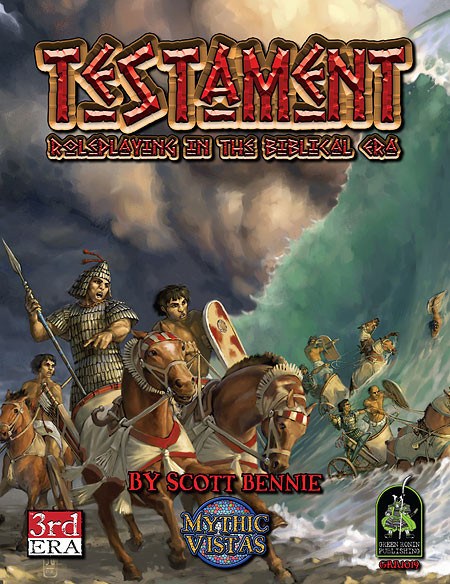
Testament: Roleplaying in the Biblical Era , part 1
The year was 2003. The same year, in fact, that D&D upgraded from 3rd edition to 3.5. The same month , in fact. Just as it was hitting shelves, its necessary core rules were getting an upgrade, just enough to break easy compatibility. So that was good.
Testament is... a game about playing D&D in the Old Testament. It's subtitled "Roleplaying in the Biblical Era", but with rules and campaign information set around Israel, Caanan, Egypt and Mesopotamia, it's pretty much exclusively about playing as Israelites between when they were led out of Egypt and when the countries of Israel and Judea were overrun with token efforts about other times. It's about playing as judges and warrior-kings with God's let. You won't find any real support here to let you adventure with (or after) Jesus.
I haven't read it all that thoroughly, yet, but I'll be going over things as I post about them... until I get sick of it. Yeah, I'm not going to commit to getting all the way through this, because this is one of the ugliest layouts I've ever seen in a book:
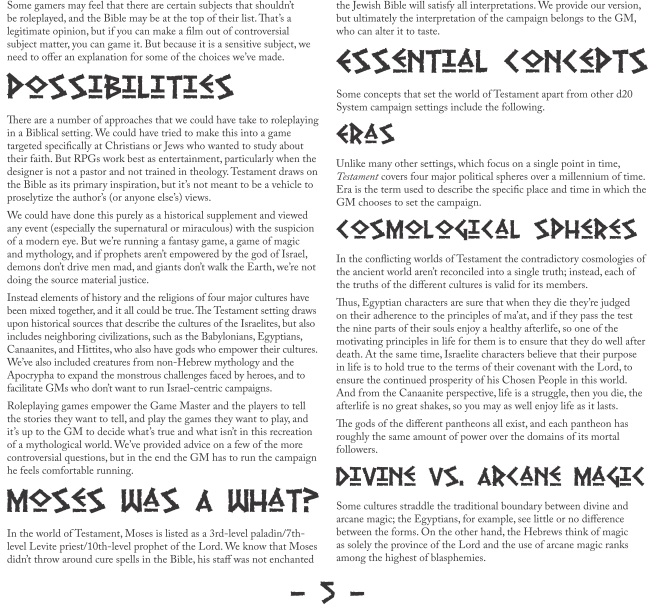
The header font is really ugly and not all that readable at a glance (D vs P is a really bad example) and the rest of the text is... tiny. It's 240 pages of miniscule writing. There is a bit of art in here, all black-and-white because this is not a color book, but it doesn't do much to make the book feel any more welcoming.
With that out of the way, it's time to take a look at what the book gives us. It starts with a fairly odd collection of assumptions: we're given Moses' levels (the first three were paladin), the fact that various gods all exist and have equal power over their own followers (what?), this game's version of alignment (piety, which is an integer showing how in favor you are with your god) and the ability of gods to wander around completely hidden from view by basically being double-ethereal.
Oh, the first among equals for our clerics and priests to worship is, of course, the god of Israel. In a sidebar, we're given a bit of information about what potential names could mean/where they came from and wraps up by ignoring all of that and saying that all other deities get personal names, but YHVH is going to be known as "god of Israel" or "the Lord" from here on out.
Next time: We see about making a 7,000 year old Egyptian elf desert hermit.
Some of the Canaanites are gnomes and some of the Israelites are elves
Original SA postIt's not that henotheism doesn't match the setting (thanks to Fossilized Rappy and Night10194 for reminding me what the term was--I couldn't recall it), since it does: clerics, etc and divine magic/miracles are as important as any other 3.x-era setting even without things like Elijah vs the prophets of Baal in source material. It's more that it surprised me to slap a BIBLE TIMES label on it and then make a basic setting assumption that most American Christians would not agree is Biblical. But, honestly, I'm not fully equipped to look at this as a comparative religions course or anything. I'm just here to roll some twenty-siders.
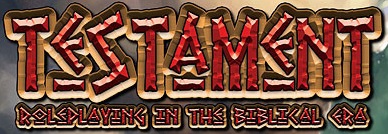
Testament: Roleplaying in the Biblical Era
, part 2
Chapter 1 opens with us being told that there are only two real differences between core 3rd edition and Testament character creation: GM picking campaign era, and the player picking his character's nationality and character flaw. Pretty much the case. Notably, though, it does
not
exclude the part where you pick your character race except as one tiny optional thing at the start of chapter 9 (the bestiary) and the character classes do talk about how small/Dwarf characters get special cases, so... yeah, some of the Canaanites are gnomes and some of the Israelites are elves, I guess, unless all of them are human and there are rules for impossible characters. Roll with it.
The era is just sort of the broad point in the timeline where the adventure takes place, starting Antediluvian (pre-Noah's Flood) at about 3000 BCE (the book sticks to BCE/CE notation) and running all the way to the Maccabees, ending in 135 BCE... a little early for the historical Maccabeans, but I don't know the history well enough to comment on it. Each of the nine listed eras has two paragraphs: one describing the general state of the world, and the other talking about what sort of adventures fit it well. I approve! The only era that has special rules, at least here, is the Antediluvian era, where age categories are multiplied by ten. So elves here can live 3500+(4d%x10) years or well over seven millennia with a good roll.
On to the nationality. Nationality is Babylonian, Canaanite, Egyptian or Israelite. Each gives some idea of what they're like, what they speak, and what classes they can be.
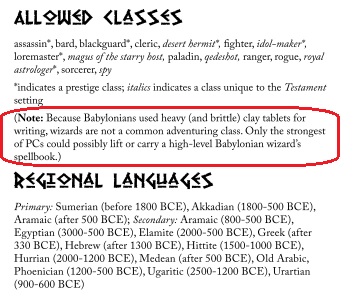
I include an example of that, chosen for the note I circled. It amused me.
PCs also get a Flaw in Testament. It's not the anti-feat of some other supplements, nor is it optional. Pick your character's big issue. Roleplay it at least somewhat. They range from being deceitful to racist to lecherous to vain.
Languages are next: they come with not only that language, but also its language FAMILY. If you can pass an intelligence check, you can get your point across through the language family while not sharing a language. Pretty neat, if only Comprehend Languages wasn't already around itself.
Literacy is also inverted from normal: you're illiterate unless you take knowing how to write as a language slot or drop skill points on it. Priests and arcane casters don't have to.
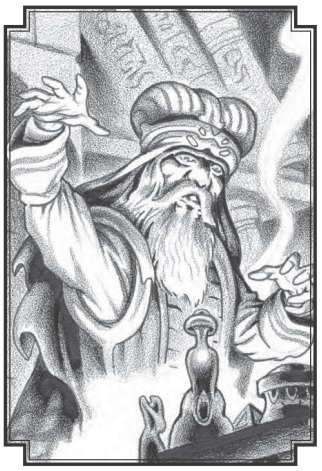
On to classes! Again, each nation background has its own list. Some are core classes and prestige classes, and this book has new and replacement classes as well. Israelite classes are first, since they're the usual PC option. The first up is
Levite Priest
. This class replaces the cleric. Compared to the stock cleric, the Levite priest has a little less HP, a
lot
more skill points, less armor/shield proficiency, a handful more spells/day with a few added restrictions, and a grab bag of other specials.
Their spellcasting is... impressive, honestly. They don't prepare spells: they cast like a sorcerer whose list of spells known is "all cleric spells", but on a better-than-cleric schedule of slots... and they can ask the Lord to let them use druid or wizard spells, too! They just have to pass a piety check to do so, but we don't know how that works, yet, so I don't know if that's trivial or almost impossible. The downsides: no Evil magic, no planar travel, no raise dead, and no non-lifesaving spells cast on the Sabbath. An easier check is needed to cast certain spells labeled "difficult", basically for being too flashy for the Lord who hung around Egypt and Sinai being about as subtle as a volcano. Possibly in an oversight, the list of difficult spells includes a couple of spells excluded from their lists, like Death Knell. Also, to regain an expended slot, a Levite priest has to either sacrifice or promise to sacrifice livestock at the Temple equal to 5 gp/spell level. So if you're willing to sacrifice your camel (100 gp), that's worth two level 9 spells and a level 2. Probably not the largest drain on a character's finances. Questing for the Lord can sidestep this, too.
Now, their other class features: turn undead is replaced by turn demon-possessed, which is functionally the same barring its find-replace change. Craft Phylacteries of Power (level 3) lets them make a special divine focus that gives them +1 to spell DCs, quickens all 0-level spells, and a few other bonuses. Arcane spell resistance (level 5) gives them SR 5+class level against arcane spells. Protection from Serpents (level 8) is +2 AC against dragons, half-dragons and anything else vaguely snakey. Speak with Serpents, at the same level, lets them also always talk to the same and use stuff like Charm Person on them no matter their creature type. Scribe Torah Scroll (level 10) gives them a permanent Magic Circle Against Evil and a couple lesser effects. Plague (level 13) gives them... a big bonus to plague-related spells. Battlefield Inspiration (level 15) ties into what looks to be a mass combat system I haven't dug into yet. Turn or Rebuke Dragons (level 18) just adds dragons to their turning targets. Their capstone, Shield of the Lord (level 20) only comes into play when someone kills them. The killer gets hit with Bestow Affliction. The priest is still dead.
So, overall, it's a class that hits the same role in D&D as a cleric, but with a lot of skills and a bit more magical flexibility to make up for lower combat ability. It has a pretty clear role in the setting and is set up to match it well. Probably too powerful (a cleric that can spontaneously cast wizard spells?), but, well, 3rd edition D&D.
Next time: I'll go through more of the classes, maybe all of them with a more general overview. I wanted to disassemble this one because I think it's one of the neatest and as an example of what the rest look like, but that might wear thin unless you really want to see the guts of an old d20 game and how the classes match up. Let me know if you have an opinion!
Israelite Classes
Original SA post
Testament: Roleplaying in the Biblical Era , part 3
Today we're starting with the Psalmist . This is the Israelites' answer to the bard. They get less skill points but medium armor and all martial weapons. They're divine casters, get a handful more spells/day than bards and a much larger number of spells known, but a rather different (and slightly smaller) spell list:
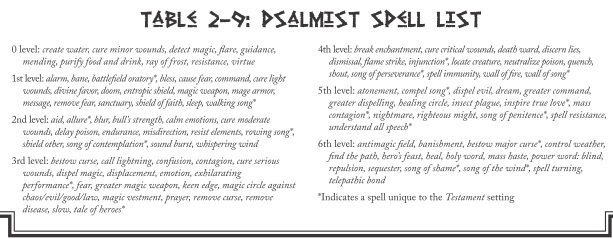
I think the selection is a little better than a bard, but feel free to correct me. If you can't read it... well, go get an 800x600 monitor so it looks larger. That's 101% zoom in my PDF.
Now, on to their other features. They don't have the equivalent of Bardic Knowledge and only roughly get Bardic Music. Worship Circle (level 1) requires at least ten Israelites to form a circle for a full round, then get +1 to saving throws for 3+wis mod rounds. Can you say "situational"? Situational is being very nice. Psalm of Protection (level 4) is +2 to AC for as long as he keeps singing (move-equivalent). This and all future "Psalm of" powers are 1/day, but the psalmist gets Selah (level 6) to let him use a full round action immediately after stopping the psalm to recover a use. That can be done 1/day at level 6, +1 for every four more levels. So, you know, basically the psalmist's psalms are not as easy to spam as bardic music, with the clear intent of being more powerful in exchange. Psalm of Fortitude (level 8) gives allies fast healing 3. Psalm of Travel (level 12) is a movement speed boost. Chorus of the Lord (level 14) lets you use back-up singers to bump up your effective caster level for spells, which is awesome and I love it. Psalm of Battle (level 16) is +1 melee damage and morale checks.
Overall, it's a roughly comparable match to the bard, while hitting its theme well.
With Levite Priest, that's the Israelites' unique base classes. They can also be Fighters, Paladins, Rangers, Rogues, Sorcerers and Testament's unique Spy class that's at the back of the class section for everyone to share. They get some prestige classes from the DMG, but of more interest to us are their unique prestige classes.
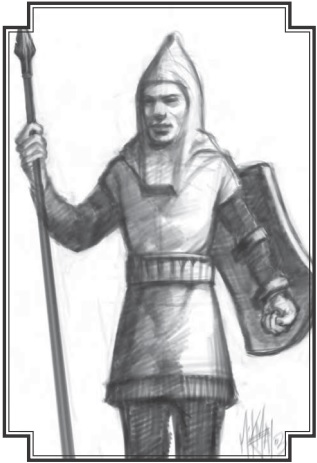
I think I have this guy on my lawn
Champion of Israel is a fighter upgrade with a hefty set of prereqs, including a feat tax (Endurance), skill in Perform, and a BAB of +8. In exchange, he can up his strength for brief moments, reroll and pick damage, buff up Cleave and get some tolerable critical-based buffs. It's a good class if you think the fighter is a good class. It won't win any awards otherwise. Of course, you do have to keep to the Lord's commandments. As the game tells us "Not all have teh [sic] fortitude to truly walk the path of the champion of Israel". This book is... not well edited.
Judge is a weird paladin downgrade who gives up some of the paladin's stuff (d8 HD and no mount buffs, but smite evil still goes up) for 1/day Planar Ally spells and some "see through deceit" bonuses. Not very good unless you're playing CSI:The Holy Land.
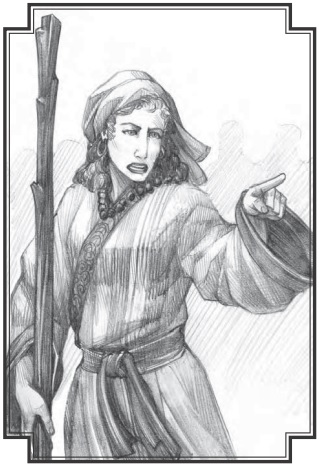
Prophet is the supposedly awesome prestige class for those who truly serve the Lord as his heralds. It's a divine spellcasting prestige class that gives +5 spellcasting levels in 10 class levels, so it's terrible by default. If you want details, it tries to make up for that by getting +Wis mod to AC, some spell resistance and permissible resurrection. The permissible resurrection states that the character can only have one dead-raising spell prepared at a time. That is... not meaningful. The only classes that can qualify for this prestige class and have any raise dead spell are the Levite priest and the psalmist, neither of whom prepare spells.
That's the last of the Israel-specific classes; next time we'll look at the setting's wizard variants for the other cultures; the stock wizard has no place in Testament, it seems.
Egyptian, Babylonian, and Canaanite Classes
Original SA postSimian_Prime posted:
"Thou shalt not suffer a witch to live" - Exodus 22:18


Of course, Israelites can be sorcerers with no problem in Testament...

Testament: Roleplaying in the Biblical Era , part 4
Egypt is up next. Egyptian classes are Bard, Cleric, Fighter, Paladin, Ranger, Rogue, Spy and the Testament-exclusive wizard replacement Khery-heb.
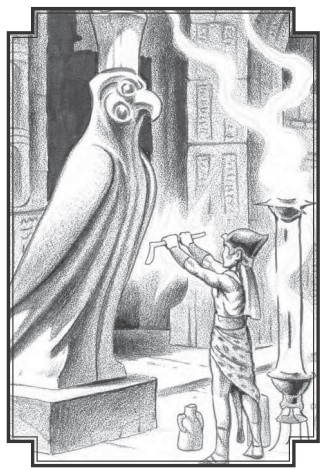
The Khery-heb is largely a wizard. Their spellbook is fluffed as a scroll case. Otherwise, they're wizards with a miniscule difference or two in terms of spells/day and no crossbow proficiency. The big difference is that they trade familiar and bonus feats for a new set of features based around "being literate": They get the Scribe and Scribe Scroll feats as bonuses. Their Domain Spell (level 1) lets them write their deity's domain spells as scrolls, then use them. They can't use non-Khery-heb scrolls of that spell, any other divine spells, or any other edge you find. Just those specific domains.
At level 2, they get Craft Mekhtet as a bonus feat. Flip over to feats... "Benefit: You can create amulets called mekhtets" and another page reference number. Flip over to there, and it says to go BACK to where I just was for details on the crafting. Lovely. These mekhtets are rather minor items, like one that gives +1 to Intuit Direction checks when lost in the desert (if you've forgotten, Intuit Direction was a skill 3.5 dropped for being generally worthless) or +2 to hiding from hippos. No, really, those are real examples.
Create Minor Shabti (level 3) lets the Khery-heb carve wooden figurines that basically act as slightly better Unseen Servants. Of more immediate use, giving one to a dead body gives you piety, and it can be spammed pretty much forever. A single week's Minor Shabti work can give you enough piety to outweigh deserting your military post so you can go murder the Pharoah, then erasing his name in his tomb and putting in a witty disparaging nickname instead, writing a confession of this and your magical secrets on a cat, selling that cat to a foreign merchant, and then lying about all the above. So, you know, don't do that more than once a week and you're a-okay in the gods' sight.
Enhance Mekhtet (level 5) gives minor bonuses to your hippo-hiding. Enhance Scroll (level 7) lets you freely apply some metamagic to spells cast from a scroll and I gotta say I like this. Craft Major Shabti (level 10) lets you create a bit of a speedbump of a fighter instead of the basic version's laborer. It's not going to be useful in combat, but you can give this one up to get +5 piety! Sadly, you can only do it once a week, so my dreams of figurine-crafting to abuse Pharoahs every day is going to go unrealized. Divine Reading (level 11) lets you use your scrolls with no concentration check or attacks of opportunity. Greater Isefet (level 13) refers us to a minor subheading in the piety chapter which basically is your typically-understood Voodoo doll curse, ancient Egypt-style, and this greater version lets you do it better. Divine Vessel (level 15) lets you channel a god to replace your head with an animal head, giving you a surprising amount of resilience and a unique bonus based on what god you follow. Twice-Read Scroll (level 17) lets you read a scroll twice before it disappears. True Magic (level 2) lets you write 30 levels of spells on a scroll, and those spells are cast at +4 to beat SR, +4 to DCs, and heightened/enlarged/empowered for free. What's that? You didn't know scrolls could carry more than one spell? Well, it turns out they always have, it's just that every DM and adventure writer gave you "Scroll of Whatever" instead of a scroll with six spells.
Overall, this is a fun little class, it's just that the writers overlooked one infinite piety machine. Also it's better than a stock wizard. That probably bears mentioning.
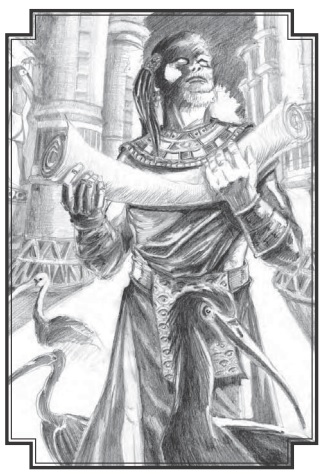
Egyptians have only one unique prestige class: the Ren-haku . It's a caster-upgrade class based around true names (this is the first time we've had true names mentioned and there's no cross-referencing or anything) that gets half casting increase. It's useless. It doesn't have any interesting abilities except for the capstone, where they can throw a few HP into splitting their soul off into a hawk so if you kill them they respawn at full HP where the hawk is. The limit is that this is a 1 hour/month power.
On to Babylon! Babylonians can be bards, clerics, fighters, paladins, rangers, rogues, sorcerers, spies, a class called "Qedeshot" that's actually filed under Canaanites in the book, and their wizard variant, the Magus of the Starry Host.
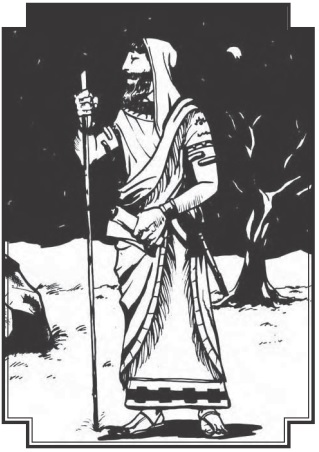
The Magus of the Starry Host has the same lack-of-crossbow as the Khery-heb and normal wizard casting schedule. Their unique gimmick is... no spellbooks. They glean their spells from watching stars at night, and don't have to prepare their spells; they cast from spells known like a sorcerer. Again on to their class features. Domain spell (level 1) gives them access to Heaven domain spells as arcane. Spells in the Heavens (level 1) is how they refresh their expended slots: spend an hour at night watching a specifc star. Pick Polaris and never go south of the equator. Compound Wondrous Incense (level 1) lets them create incense that's largely less interesting than the Khery-heb's amulets. Spell Pilgrimage (level 2) is how the Magus gains new spells known. Largely it seems like a combination of "roll until you get lucky" (so you don't go "oh, I can learn Wish if I get... nine hundred miles away in less than a week and a half") and "built-in plot hook", since you're probably not the ONLY person heading off to see the eclipse or whatever.
At every 4th level, the Magus gets Lore Pilgrimage. Same thing, but the benefit is bonus skill points or a bonus metamagic feat, possibly. I think there's a mistake here, because it goes onto just talking about learning "a spell" instead of that. Brew Potion (level 6) is just a bonus feat. Scrying Star (level 10) gives you a bonus to Scry checks, you know, that other skill they got rid of for being useless. Nondetection (level 14) gives the magus the effect of the spell of the same name when his star is visible, so only at night when it's not too cloudy. Meh. Observatory (level 18) lets you build a 50,000 GP pyramid observatory where all spells you prepare from there are at +1 DC.
It's... a neat class, but I can't help but feel it's too much "wizard plus busywork".
There are no Babylonian prestige classes, so it's off to Canaanite classes. They can be bards, clerics, fighters, paladins, rangers, rogues, sorcerers, spies and the same Qedeshot that Babylonians can be.
So... Qedeshot . Qedeshim if you're a boy.
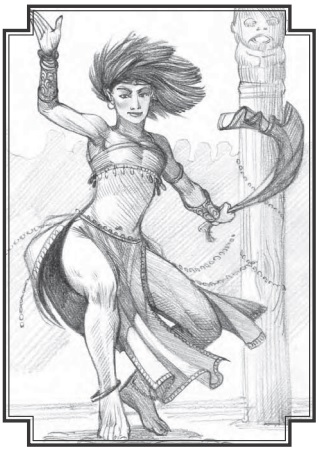
They're fertility clerics/temple prostitutes of Asherah or Istar. It's... not as bad as you might think when you throw "d20" and "sexual content" together, honestly. It's got a note about it being a bit of a sensitive topic, for one. I kind of like the class, but it's got some issues. The biggest one is that it's useless. Qedeshot only gets spells up to 6th level, on a bard time table. Clerics exist in these cultures. Nothing else the Qedeshot gets makes up for the low casting. If you for some reason ran a Testament campaign in Babylon or Canaan, I'd probably recommend banning normal clerics (and maybe bards) just so these guys have a chance to... be useful.
Details 4+Int mod skills, only simple weapons and no armor. Otherwise HD/BAB/saves are bard. Qedeshot are charisma-based casters with domains, but the domain choices are... badly written.
quote:
A qedeshot selects two domains: one must be Fertility, and the other is chosen from among the other domains of her deity: Animal, Heaven, and Plant. She selects and casts domain spells as per other clerics. She also gets the granted powers of both her selected domains. A qedeshot of Asherah may select Water and a qedeshot of Ishtar must select either Destruction or War for her second domain.
So, a Canaanite, following Asherah, gets Fertility and one of: Animal, Heaven, Plant or Water. A Babylonian, following Ishtar, gets Fertility and one of Destruction or War. I have no idea why that got rendered as it did above; it's just badly composed enough to make you have to stop and untangle it. Qedeshot can spontaneously convert spells to inflict/cure. I'm not sure if it's "both" or just one.
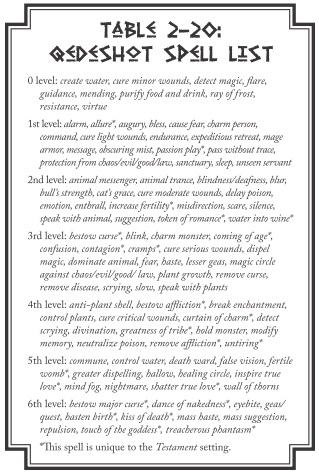
On to the non-casting stuff, at level 1 the Qedeshot gets Charisma Defense, which is Cha mod to AC and gives them a little defense since they're running around in gauze. Akin to a bard, the Qedeshot gets the ability to Dance instead of bardic music. 1/day at level 1, one extra per 3 extra levels. They can use this for Fascinate, Inspiration at level 3 (close to Inspire Courage), Sanctuary at level 6 (like the cleric spell), Pain at level 9 (Perform vs Will for near-zero damage at melee range... why?), Damnation at level 12 (dance, point at a guy, everyone ELSE makes a will save not to attack him) and Death at level 15 (Perform vs Will or DEATH). Damnation points out that it can compel "demi-humans", which is not a term 3rd edition D&D uses and just keeps blurring whether we have half-orcs and halflings or not.
Create Magic Items (level 1) is a misleading name. It specifies that Qedeshot does not qualify for Item Creation feats except the two tricks it gets in its own features.
Kiss (level 2) is a 1/day, one more for every three more levels, benefit the Qedeshot bestows. Its duration goes up with level, and lets the Qedeshot's other buffing spells and features work at enhanced power. A good and flavorful way for a class based on fertility and community to show that.
Passion (level 3) says it's time to get down to the fuckin'. After sex, Perform vs Will or the subject gets basically a boosted Charm effect, but it's not all bad: the thrall can get bonuses and make it easier for the Qedeshot to heal them. Eh. Only humans or half-Nephilim can be thralls, and being a thrall to one Qedeshot blocks another. So only humans because dwarves are not allowed in or should that be read as only "humanoids"? Wait, the Half-Nephilim template can be applied to aberrations , so a Gibbering Mouther can be seduced but a full Nephilim can't?
Freedom of Dance (level 5) says that a dancing Qedeshot gets freedom of movement (the spell) and cannot be flanked or flat-footed except by a rogue 4+ levels higher. Carve Asherah Pole (level 7) lets you make a big phallic landmark and gain some benefits while near it, which fits the community thing. Brew Oils (level 10) lets the Qedeshot do the brew potion stuff, but only as oil you rub all over yourself. Exalted Dance (level 13) negates all attacks of opportunity or needed concentration checks while you dance.
So... overall, it's a light support/healing/buffing class with themes of community and fertility. It's a good class in a group of fighters, rangers and rogues, but even a bard and certainly any primary caster just blows these guys out of the water in terms of utility. They do have a sexual component, but it's not overwhelming or played weird.
Next we get into the generic classes. That will be the last of this chapter; after this the book takes a sharp turn into... well, not exactly bad...
Generic Classes and Feats
Original SA post
Testament: Roleplaying in the Biblical Era , part 5
Today we're wrapping up the classes. The generic base class for all the nations in Testament is the Spy . You might have noticed, if you were paying unusually close attention, that there are no barbarians, druids or monks in Testament. Well, 'tough luck' on the first two. I guess really angry guys don't match wrathful gods or something? Barbarians really should be in.
Anyway, Spy. They're halfway between the monk and the rogue, with a sprinkling of arcane casting. d6 HD, 6+int skills, 3/4 BAB, simple/martial weapons, light/medium armor, good Fort/Will, poor Reflex. The armor is silly because it doesn't synergize at all. At levels 6, 13, and 20 the spy gets a move speed upgrade of +10 feet/round. Or, if they're small or a dwarf (see? there it is again!), they get +5. This only works when completely unarmored. They get their Wis bonus to AC when wearing only light or no armor. They also get no special ability to ignore arcane spell failure, so they have that to disincentivize them from wearing armor if they have the stats to swing it. So the only thing it's really set on is "no heavy armor" with sliding other penalties or bonuses for medium/light/no.
These guys are super skill-focused. Skill Focus (Gather Information) as a bonus feat at level 1, Skill Focus (one of Listen, Search, Sense Motive or Spot) at level 4, Skill Focus (one of Bluff, Diplomacy, Intimidate or Sense Motive) at level 10, Skill Focus (one of Disguise, Hide or Move Silently) at level 16, and any Skill Focus at level 20. They also get four movement-based feats at levels 3, 8, 13 and 18 from Dodge, Endurance, Improved Bull Rush, Lightning Reflexes, Mobility, Side Step, Spring Attack and Run.
Their spell list is 16 spells in total, looks to be all divination or talking stuff. They don't even get Charm Person. It's also int-based.
Their other features are Concealment in Plain Sight at level 6 and Indomitable Movement at level 14, the latter of which is just "you do not provoke Opportunity Attacks for moving"... eh, and a tiny bonus to specifically and solely save against charm spells.
So we have a class here that needs high physical stats to give it HP, damage and defense. It also needs intelligence (at least to 14) for spells and skills. Also Wisdom for AC. And, hell, it's supposed to be a talky, cunning class so it needs Charisma, too. In exchange it's... a very fast rogue with no sneak attack. No synergy, no power even where it has features. There is no reason for this class to exist. It's unable to do anything in a team. If you know your tier listing for this edition, this is a tier 5 class at best. If you let its "use all abilities" get away from you, it's worse than the Expert who knows to pump int.
It doesn't even get art.
Prestige classes do, though.
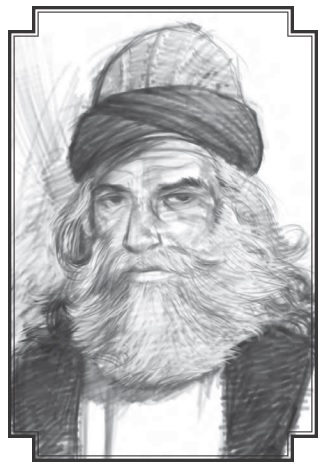
Desert Hermit is a prestige class for all four nations. It's a ranger upgrade that gets desert-specific bonuses, the ability to create or snuff out flame, teleport in the desert, even, commune with his god, and a free pass from elementals. It's not a bad class, exactly, but it takes the ranger into a more mystical direction, which you'd need to understand before picking it.
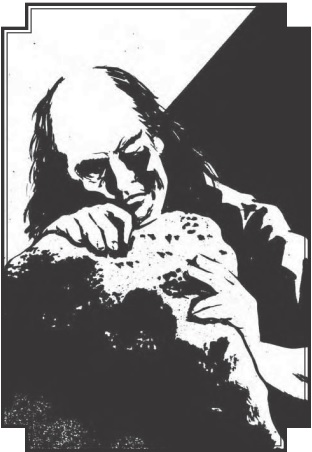
Idol-Maker is for everyone but the Israelites, as a divine casting option. It's another half-casting prestige class so it's useless. It does let you make and animate magical idols, but it doesn't look like this is actually a useful ability.
Master Charioteer is for Egyptians and Israelites. This is a fighter upgrade that makes you really scary in a chariot. If you're going to be doing chariot combat, this is very good.
Royal Astrologer is for Babylonians and Egyptians. You get a bonus to divination spells. It's also for spellcasters but gives only five casting improvements in ten levels. And we know what that means by now.
That's it for the classes; feats are up next. Few of these are worth mentioning; there's a lot of metamagic and a few feats to play into Testament's mass combat system. Of note are the one to let you burn XP to directly increase attack rolls and one that lets you up your piety (I'll get into why this is silly next time).
Ho-hum, feats are done and... hey, what's this next section? Mythic feats?
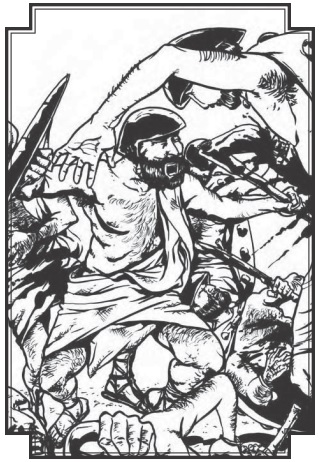
Yes, back in 2003 Green Ronin published Mythic feats that are eerily similar in concept to the Pathfinger mythic elements. Instead of Pathfinder number tracking, however, it just says that mythic feats are flat unbalanced and the DM should not let a player take more than one mythic feat at the most. These can make it almost impossible to slay you, make you straight immune to blades, make your turn/rebuke work against arbitrary targets (like other kingdoms!), get +8 to an ability score, or get the mark of Cain on you that makes it so killing you will very likely make your murderer suffer instant divine retaliation. All in all, no real complaints about this unless the DM uses them to bluster that his pet NPC with six of these is totally legit.
Next time, though, we get into the piety system and find out just how often a Levite can have sex with his boyfriend without the Lord getting angry enough to not let him cast infinite wizard spells. Spoiler: a lot.
Piety
Original SA post
Testament: Roleplaying in the Biblical Era , part 6
So: piety. Piety is a "recommended option" in Testament, basically serving as an integer showing how well you're adhering to your chosen god's strictures. Except it's not your god, it's your culture. And it basically makes everyone in the world who's not Genghis Hitler lawful good. It's also not entirely clear if it's meant to run alongside alignment or replace it.
Piety starts at 0 at birth/when you start as a PC. Your piety can run as high as Wis (not mod) + level, and as low as negative infinity, but you'll die from divine wrath long before that. Piety checks are just your normal d20 check, plus half your piety, which is your piety mod and (this being d20) this is what you use more often than not.
You can use Piety, once per session, to request extra temp HP, smite evil (like a paladin), improve saving throws, improve skill checks or get free divination spells. If you're a Levite Priest, of course, we recall that they can request druid/wizard/other arbitrary spells with a piety check of DC 20 + spell level. So once you fill up your piety... it should be pretty simple. Piety mod of at least 9 (17/18 Wis + 1 level divided by 2) to hit DC 21. 12 or better. The Pious feat lets you get 10 extra piety, so +5 to the mod means a 7 or better. As you get access to better spell levels, the DC goes up at the same rate as your piety, at worst . If you get any sort of wisdom increases, you're going to need lower and lower numbers until a Levite Priest can spontaneously cast absolutely any spell not forbidden to him by its type (evil, planar travel), making them truly absurd casters even by D&D 3.x standards. This is far and away the most useful thing to do with piety.
So, how do we gain or lose piety? Time, mainly. Based on how observant you are of your religion's strictures, you get piety at a rate between +1/month and +2/week. The game abstracts it as your Knowledge (religion) skill; if you're maxing it, you're at the highest level. You also get free piety for successful quests for the good of your nation and every time you level up. So... it should shoot up if you care about it unless the game has super-quick and non-noble adventuring.
There's also special rules for ways to decrease negative piety so it goes to 0, but... let's ignore the details. If your piety ever gets down to -10, you have to made a DC 10 piety check to avoid a divine curse. Now, uh, your piety check only relies on your piety, so that's flat "roll 15 or better on d20". You make the same check at every further multiple of ten, which means that you need at least a 20, 25, 30, etc on your d20 to avoid divine wrath. Not very well-considered.
Losing it is actually harder. There's a (officially non-comprehensive) list of sins for the four nations. Rape is -2 or -3, Murder is less of a sin for Egyptians than anyone else, stealing Babylonian irrigation equipment is an extra penalty on theft, and so on. The worst sins for anyone who isn't an Israelite is -10, so barring silly piety generation tricks, it takes over a month of proper rituals to get gods to forgive you for murdering the Pharaoh.
Israelite sins are a longer list, with more high numbers (-20 for murder of king, -15 for murder of priest...), and they have stricter rules for gaining piety for just observance. Basically... the Lord is not looking all that kind or generous here. Having a same-sex partner is only a -1 piety hit, though, so at max piety you guys are still doing okay as long as you're not otherwise a horrible villain and don't have sex more than twice a week. Still, six months of this relationship is exactly equivalent to kidnapping and sacrificing your own son, who is the king of Israel, on the altar of the Lord as an offering to Ba'al and kicking an orphan as you leave the Temple.
The only other ways to lose Piety are to let a tempter demon turn piety into a bonus to a roll, eyeball people until they're cursed for one day or (for Egyptians only) doing something like a voodoo doll to curse them more permanently.
Also, this chapter? No art.
Next time, though, we get into Testament's Mass Combat system. It's... kinda dense. I'll have to see how it comes out.
Mass Combat
Original SA post
Testament: Roleplaying in the Biblical Age , part 7
So last time we looked at how to be a good person, and it summed up that it's damn well easier if you're not an Israelite. Today, we learn how to smite the heathen armies. Yes, it's a mass combat system for 3.0 D&D. Spoilers: it's not very good. I'm not going to go through it line-by-line because... it's not very good and it's not presented very well. We're just skimming the highlights.
Your army, we are told, has three Sides, basically the center and the flanks. You can have a fourth Side in reserve. PCs and other important characters are called Captains and attached to a Side. Each Side and Captain gets an action each round.
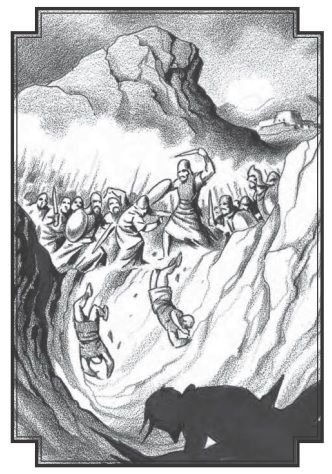
Battlefield rounds have no set duration, but for spell duration purposes they are 20 minutes. So they're 20 minutes.

On the initiative count of the Side's commander, the Side acts. Wait, is that distinct from the Captain? Can Sides have more than one Captain? Later in the chapter it tells us that the answers are "no" and "yes": one Captain serves as the commander. But it doesn't tell us that when it's doing its first definitions.
Attacking is the same roll-vs-AC you know. A Side can sometimes have to make a morale check (wait, why the hell is this stuck in THIS paragraph?), against a DC of 13. Always 13, huh? Any spell, the loss of all Captains, and 50%/75% destroyed are the triggers. Fail roll, Side flies. If one army has only one Side remaining it loses.
Sides have a number of statistics, ranging from their Quality (whether they're 1st/2nd/5th/8th level warriors on average) and Hit Points. Hit points deserve special mention: 1 HP equals, depending on scale, 1/50/1,000 people... the last scale means that two people could, indeed, put ten thousand to flight as Deuteronomy 32:30 talks about if they're able to put out 50 points of damage. It takes fifty because you need to get them down to half health to make them run away, and damage is divided by ten here. So... we divided HP by ten, then divided damage by ten. Clever.

Of note is that it doesn't talk about how to actually derive numbers here. That's at the bottom of the next page after three-quarters of a page going onto what actions you can take.
Spells have rules on how they interact with Sides, but... rules as written, tend to just end conflicts.
ZeeToo's Example Battle posted:
Say the armies of Egypt, 1,000 men to a side in 50-scale HP, are marching on an enemy. These are all legendary warriors, almost demigods on the field of battle, who make even seasoned veterans quake in their boots. After everything is calculated, they have the following statistics:
- Quality: Legendary
- Hit Points: 160
- Armor Class: 14 (probably; the game doesn't actually give a formula but I'm assuming they have hide armor, small shields, and the formula works the same)
- Initiative Modifier: Equal to best captains' Cha mod
- Base Attack Bonus: +8
- Base Damage: Kopeshes for 1d6, 19-20/x2
- Damage Multipler: x5 (side note that this is applied before you divide by 10 and round any fractions up. No, really, that's the system)
- Base Morale: +6
- Battlefield Feats: Six of them, but fuck picking that
Anyway, the army's commander turns and addresses his troops: "Take heart, my friends! As we have trained for, the greatest Khery-Heb wizard in Egypt, right hand of the Pharoah, is with us today! By his magical might, we shall become as giants, and trample our foes underfoot!"
The Khery-Heb, a 20th level caster, waits for the cheering to die down, then casts Mass Enlarge Person on the ranks. All thousand warriors grow to be ten feet tall at the least, and immediately every single man in the army starts sobbing in fear and runs the fuck away.
So what happened? Any spell effect makes the Side make a morale check or they just instantly flee. If you cross that out and make it only spells meant to harm them and not buffing spells, it doesn't improve much. Even an army claimed to be on par with the Persian Immortals will fail its roll against a village sorcerer using Burning Hands on a 6 or lower.

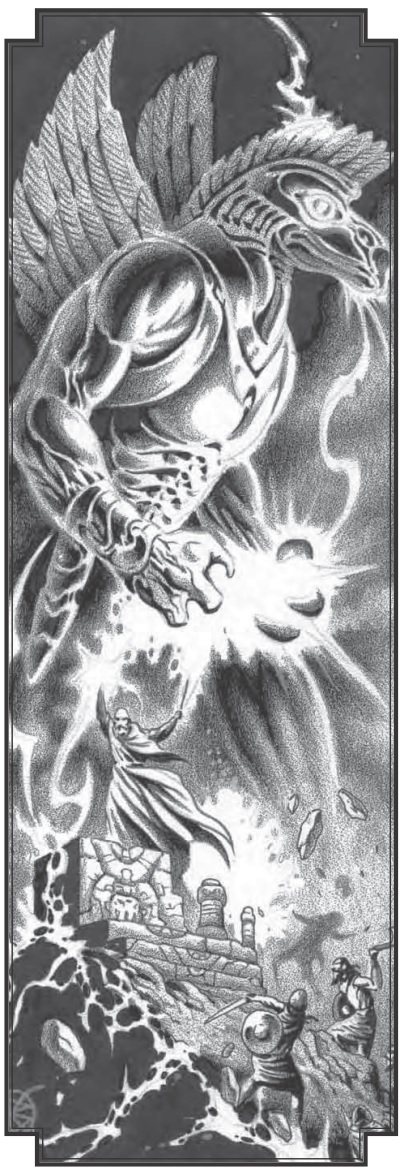
Oh, and if you were wondering if this could get clunkier, it can. One Captain can duel another, which takes place entirely within a single battlefield round. Everything else screeches to a halt until they get their normal-scale fight done.
Next up is four pages of feats for your Side to pick from. None of them salvage it. The only thing of note is that if you are willing to stack enough feats towards morale, your Legendary troops won't run at the first sign of a spell. Maybe even Veterans if you optimize for that alone. Of course, more powerful spells will still send them running; there's no possible army that's not very likely to certain to run at the first sign of Power Word Kill.
I'm not going to be entirely down on the game, though: the next part is listing feat selections for things like "Philistine Giant Footmen" or "Egyptian Charioteers", which are at least a very good thought. It's a quick and easy way to put a Side together and have it match the right flavor. Someone was genuinely trying to do a good job, and it really is mostly workable once you get past the "magic ruins d20" thing.
It even ends with an example combat, taking three rounds and five pages to handle. It's genuinely a pretty good example, written in as exciting of language as it can while still being precise, and endeavors to show off most of the variety of actions you'd take. My only complaint is that it has precisely one spell cast throughout the whole fight, a fireball, and the writer forgot to compel the morale check that was explicitly called for twice and has a table dedicated to it.
Next time... equipment. We'll probably go into spells, too.
Equipment, Community Management, and Spells
Original SA post
Testament: Roleplaying in the Biblical Era , part 8
Equipment is... not particularly interesting, so I'll skim it. The weapons are 3.0 D&D vs 3.5, which is more of a hassle to explain than it sounds like. The only interesting one is the inscribed sling stones, which give +morale to the side using it... and -morale to the side they're used on, if the latter noticed. Which is a spot check. So I hope your spot is low. Actually, no, "a spot modifier" is not something a Side has in this system. Who thought this was presentable?
Iron weapons are better than bronze in this game, which corresponds to improving crits/reducing crits based on which of armor vs weapon is which. Chariots are actually pretty cool, allowing 2-3 people to control a rampaging war machine that grants them all cover and seems... at least mildly useful. Nothing stands out as "what the hell", at least. There's also tables of mundane equipment, of course, with enough detail for us to known that the wise man who brought Jesus frankincense was cheaping out: it's only 10 gp/lb. Same table gives us costs for a pyramid (100xheight in feet squared).
Community options... Testament is really hoping your PCs will engage with the locals instead of doing the murderhobo thing. You know, because I'm sure you cracked open d20 for a farming simulation and enjoy tracking just how many of your young women die in childbirth when they fail saving throws, and how they can end up barren instead, or because of that.
Spells! There's a few that are interesting, and I'm skipping the rest. This chapter actually has art, though, and... yeah, take a look at the art.
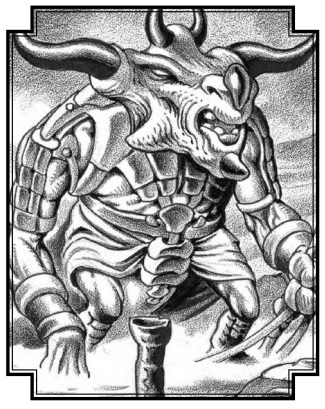
Angel in Harm's Way (level 9) lets your Israelite priest vanish and get replaced by a CR 13 angel. That's... not very impressive. I'll point out the angel when we see it the bestiary.
Bestow Curse gets more spells in its line (this, Greater, Mass and one between normal and greater) and all have massively increased lists for what they can do, from lameness to early aging. Cursing is kind of important here. There's also Contingent Curse lets you punish the target for its next sin. Curse Unto Generations is a very hard to dispel effect that causes all same-sex family for four generations to suffer pretty nastily. Paladins have a Dying Curse which seems like a poor use of resources as opposed to not dying instead.
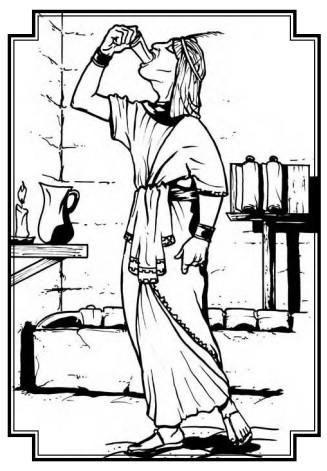
Coming of Age (level 3) is a qedeshim/qedeshot spell where the sex priest turns the target from virgin to not-a-virgin, giving them a +1 to ability scores for XP (they pay, not the caster). Casting time:
Create Bricks (level 1). Creates bricks. Clearly we needed a wizard to do that. The book tells us it would take 228 castings to get enough for one house.
Globe Against the Arcane (level 9) is an antimagic field for clerics that doesn't affect divine spells. Remember, also, that Levite Priests can spontaneously cast all wizard spells. Those count as divine for this!
Lightning Contingency (level 6) is protection from elements (electricity), plus setting off a level 1/2/3 spell when you're struck by lightning. Not electrical attacks, lightning. This is a daily occurrence, after all.
Soul Vulture (level 6) conjures an insubstantial vulture that ignores armor and pecks a named target for wisdom damage until it falls into a coma, then goes back to the caster and horks up the drained wisdom as a worm. If the caster eats it, the victim recovers but is dominated. I don't think I can add anything to that.
Wall of Song generates a wall of force that's destroyed by silence and allows passage if someone sings in harmony (a Perform check) as they try.
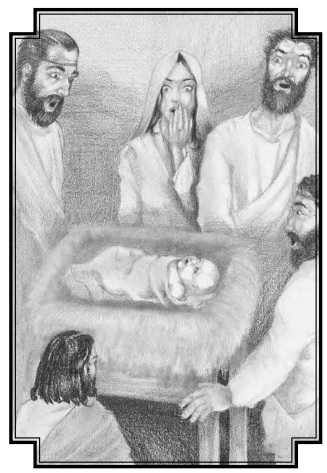
Magic Items and Artifacts
Original SA post
Testament: Roleplaying in the Biblical Era , part 9
Magic items! New weapon abilities... actually some interesting ones here. Counterstrike weapons are meant for your
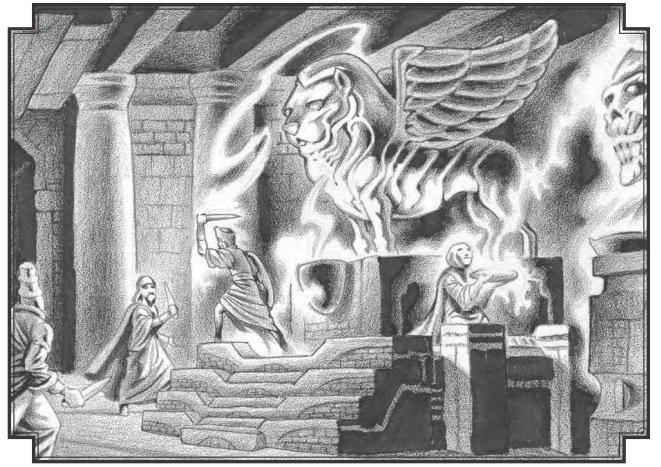
Other magical items... magic incenses. 25 gp for an ounce of one that will let you make reflex saves against magic missiles. For fifteen minutes. That's about the average quality. Oh, here's one where you dunk a hippo statue in water, then hold it up to the sun to get a bonus to swim checks.
Let's get on to the artifacts instead, shall we? There's one that sort of stands out above all the rest, obviously.
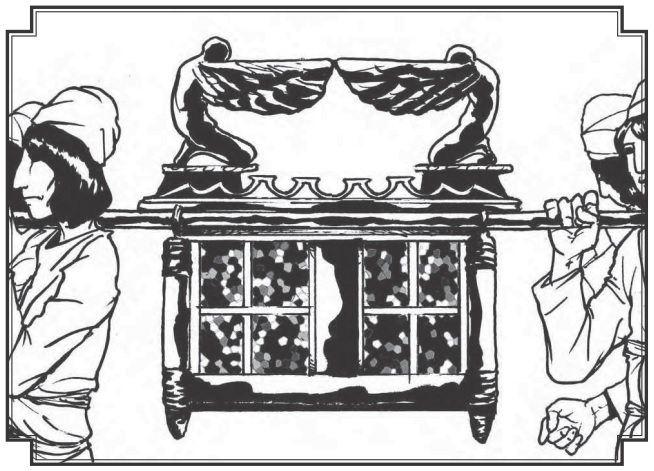
Yes, the first major artifact of Testament is the Ark of the Covenant . It can feed 60 people a day, thanks to magically refilling manna. It holds the Rod of Aaron, a major artifact in its own right with power to cause grievous wounds, control plants and the weather, turn into a snake (via a different set of rules than the Serpent weapons above, for some reason) and more. Oh, and it has no charges and no limits on use. Not sure if that's intentional or not. It also has the Tablets of the Law, which radiate extra-strength Magic Circle Against Evil.
But, of course, there's also the main event. Touch the Ark without being both a Levite Priest and ritually clean? Piety check DC30 vs instant death. If you succeed, you suffer 10d6 damage and more per two points of negative piety you possess. Now, I'm sorry, I have to stop to bitch about the math again. Piety is a single integer. If you have enough negative piety to suffer one point of bonus damage, then your save versus instant death requires you to roll at least a thirty-one on a d20. I wrote that out just so you could be sure it wasn't a typo.
If you try to actually damage the Ark, two CR 22 angels made of absolute bullshit show up and stomp all over you. There's no rules on how viable destroying the Ark is if you actually win that fight.
In other artifacts, the Mantle of Elijah gives you five levels in Levite Priest. If you already have levels, they stack. That's not just caster levels; you get all their class features; it calls out arcane spell resistance, for instance. I'm not sure if that includes hit dice and saving throws and base attack bonus. The book is silent on that. Remember that the Levite Priest is the class that can cast all spells spontaneously.
If you aren't an Israelite, Babylonians get Tablets of Destiny that let you cast Limited Wish twice per day for free.
There are a few other artifacts, but nothing of much interest.
Next time, though... hoo boy. Next up is the Biblical Bestiary ! Riddle me this: when is a hippo an elephant?
Bestiary Part 1
Original SA post
Testament: Roleplaying in the Biblical Era , part 10
So. Monsters. They give us an outline of what sort of monster is appropriate for a Testament campaign and what isn't, along with a chart for Monster Manual creatures and, of course, the new ones. This is the only point where anything but contradictory inference would tell you that it's a humans-only campaign: "[F]antasy races (such as ogres and orcs) don't have a role in a Testament game unless the GM is choosing to transpose races of[sic] various nationalities". This is on page 115 of a 240-ish book and many chapters past character creation.
Swell.
Okay, monsters. The first one is the Cherub . These guys are the ones that show up to defend the Ark. It gives nod to the depiction of angels in Ezekiel, but tells us they usually look mildly more humanoid.
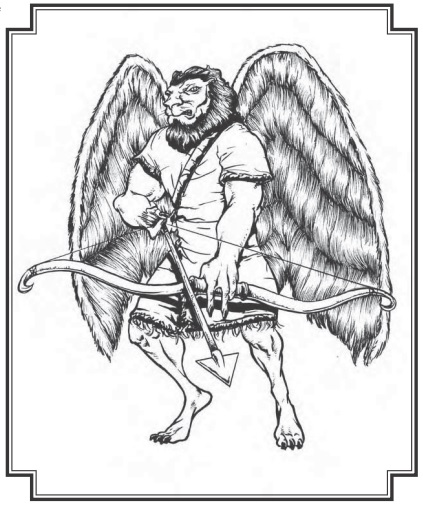
Okay, onto the bullshit. These guys are CR 22, but they have 30 hit dice, fast healing 20, five natural attacks that do at least 4d8+9, a perfect fly speed as fast as an all-out run for a human, immunity or resistance to basically everything including spells, the ability to see TWENTY TIMES!!! better than a human in dim lighting, complete immunity to dispel magic/antimagic, permanent globe of invulnerability, a lightning smite that's very similar to the Ark's save-or-die, and spell like abilities.
Now, these aren't the usual glut of spell-like abilities that every powerful outsider gets. No, these are special because most of the list is quickened , so they can be cast as a minor action. This includes spells that explicitly can't be quickened, like Greater Planar Ally six times a day.
So these guys are effectively completely invulnerable to things you try to do, fly fast enough to casually keep up with you at a dead sprint, you can't hide from them, and as they effortlessly float up to you they can freely curse you with impotence and other fun things and that's without them calling for save-or-die and the endless back-up of their calling spells. It's hard to see why the Lord needs human warriors, when he can just have one of these guys solo armies, whip dragons and devastate whole regions.
Another angel of note is the Mazzal . These are the ones that Levite Priests can turn into for a level nine slot. They're CR 13, with 14 HD. The only thing that they can do better than a cleric that's at least level 17 (to cast this), is do some infinite quickened healing spells. That's not very useful.
Flip over and it's the Seraph , a 25 CR/40 HD angel that can do everything a Cherub can, except Seraphim can do it with even bigger numbers and a lot more fire. With unlimited quickened blade barriers, these guys can not just rout armies but straight-up butcher the entire force, along with unlimited quickened greater planar allies that means that just one of these guys can summon a permanent 18 HD outsider every three seconds, and can do so forever thanks to the magic of outsiders not needing rest. So one Seraph is not only the sort of crazy number porn that outscales all but the most broken PCs in any role, he also outnumbers his opponents thanks to his ability to summon a horde of celestial superbeings at will and depopulate Heaven to create a new paradise on earth.
Oh, yeah. All the angels are on Israel's side, incidentally. No other nation gets angels.
Now, onto differently-dumb things. Behemoth . The Book of Job gives us a description of this monster, which describes something with a great big tail but the ability to both drink up whole rivers and still hide under trees. I couldn't tell you what that's supposed to look like, but I've heard people claim the big herbivore dinosaurs, for instance.
Testament describes Behemoth as "Behemoth is vaguely hippopotamus-like in appearance, with charcoal black skin, a long, powerful tail, and sharp teeth of white iron." Emphasis added. So what's the art for it?
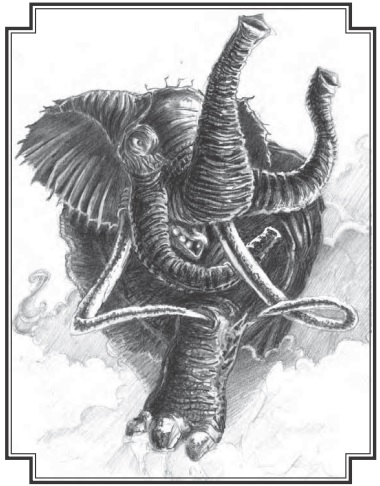
That seems right. Anyway, Behemoth is so big that it knocks down all other land creatures and can cause earthquakes, as the spell, at will if it chooses. It can strip an acre bare of vegetation in one round, has high damage reduction, and for some reason it can cast quickened discern lies.

Behemoth has no ranged attacks and, while tough, has no ability to keep up with the absurd quick-healing quadruple-speed magic bullshitters of angels listed above and does roughly on-par damage so naturally it's two CR higher than a Cherub.
There are a number more of these monsters that deserve attention, so we'll be spending some time here.
Bestiary Part 2
Original SA post
Testament: Roleplaying in the Biblical Era , part 11
Last time, we started the Israelite-themed monsters. Today, we finish them up.
Demons? Azazel is first up. Testament quotes Leviticus 16:7-10 here, but puts "Azazel" in where translations I'm familiar with put "scapegoat". There's probably reason for that, but it's beyond me.
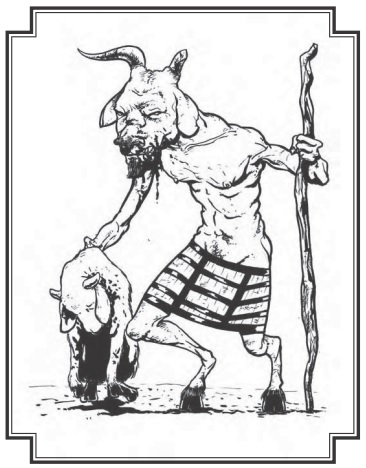
Azazel is a unique demon who hangs around in the wilderness outside Israel, eating goats and sins. Despite only being 22 CR, Azazel is a 40 HD, DR 30, fast healing 30 monster who's just this side of indestructible. Also he can fly. He can cast at-will quickened enervation, wall of fire, greater dispelling and a few other things. On the non-quickened side, be ready for two/day apiece disjunction, storm of vengeance and firestorm. He gets bonuses against those with negative piety, but, uh, we've already established that it's both easy and a good thing to keep your piety really high.
Basically this guy looks annoying as all hell to use. The guy is slinging around disjunction and negative levels. He's ability damage away from being the platonic ideal Stop The Game And Recalculate Your Character monster.
Next up is the Possessor Demon . Dinky little monsters who possess someone else to let them do the fighting. There's a template for when they possess the target. DR, energy resistance, no (other) mind control works, done. It doesn't even give a CR change.
Tempter Devils don't make any distinction between devils and demons because... well, that's kind of a pure D&D-ism. These guys let you turn your piety into bonuses on rolls, which is probably inferior to not losing your piety and using it repeatedly to do things like 'cast spells'. Of course, since your piety is capped and you get more twice a week, you could also keep a tempter devil around to let you clutch improve your rolls. It would be pretty hard to manage this, since the demon is probably going to use its abilities to cast illusions and mind control on you to do bad things, too.
Sin Dragons are a bit later on. You didn't think we were doing to skip dragons, now did you? These guys are comparable to white dragons, but instead of ice, they get bonuses against targets with negative piety. We get it, negative piety bad.
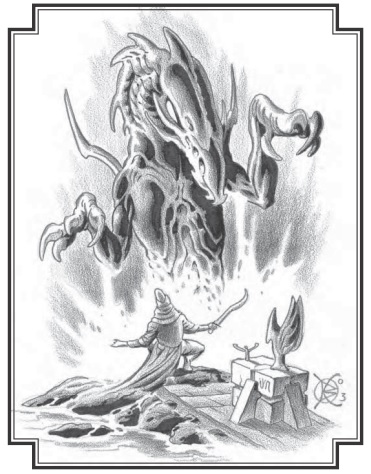
Half of their breath weapon is negated by a piety check. The other half is reflex and it's merely normal fire. As the dragon gets stronger, their breath can also apply demonic possession or enervation, but, uh, high piety blocks those out. They don't get good spell-like abilities. They don't get sorcerer spells. They do get a special Divine Vulnerability, where a good person can use divination and maybe a quest to get a special weakness to automatically one-shot the dragon, no save. I guess maybe, if it's way out of your power range? These are the most pathetic of all dragons if you're nominally a good person.
Leviathan is a unique CR 22 aquatic monster with no art and no description beyond "crocodile-headed". His unique gimmick is using control water to get new places to swim in, so don't think you're safe just because you're up a mountain. This colossal swimming indescribable thing might be lurking in the ledge above you, ready to pounce down on you and make his, uh, seven bite attacks. Sure. He's not even got all that bad a hide check, really, so he might actually be able to ambush you if you're unlucky.
Nephilim are giants with 6 innate HD, darkvision, a long lifespan and literally nothing else. Underwhelming for a group so terrifying that the Lord flooded the earth to deal with them. He didn't even get them all! So much for all life perishing from the earth. There's also the Half-Nephilim template. A size increase if you're no bigger than Medium, some buffed str/con.
Rephaim are at least a bit more interesting. These are the undead of Flood-drowned Nephilim. Their touch spreads the chill of the grave, their mournful cry sends people flying for higher ground to escape the seas... no matter how far they are from water... hey, these guys get a stamp of approval. That's good, useful stuff.
Sea goats are aquatic rams hundreds of feet long who charge at least a quarter of a mile through water to sink ships. I don't know who came up with this or why, but sure. Why not.
Ziz are neutral good birds that eat sea goats and dragons, and their song heals people with positive piety modifiers and hurt those with negative. Why are we given only alignments for monsters, and not piety scores, anyway? Anyway, they can also wade in any depth of water. If they feel like wading out into the deep ocean, their legs just extend thousands of feet. Got a problem with that?
Next time: some Babylonian monsters. There might be a nipple! There will be a much less pathetic dragon, but like Behemoth, it's got some inconsistent art.
Bestiary Part 3
Original SA post
Testament: Roleplaying in the Biblical Era , part 12
We're still in the bestiary. Let's check out some of the Babylonian monsters.
The Bull of Heaven is an unstoppable force that crushes everything in its path and is only unleashed as an extreme case of monstrous divine retribution. Wow, this guy's gotta be some sort of statistical horror, right? Let's check what he's got. CR 13, 20 HD, only two natural attacks for 2d6+10 damage. That's, uh... not very imposing. Maybe it's his special abilities that make him scary? No, his only scary thing is that if you kill him, you have to make a DC 30(!) Fort save every day or lose 1d6 each of Str/Con. You can't recover stats until you cure the disease, and you can only cure the disease with a miracle. That's a fair thing to foist on a level 13 at best party.
(paranoia
 for furry demon boobs)
for furry demon boobs)
http://i.imgur.com/WRXMrKz.jpg
Lamashtu are seven demon monsters who horrify wide communities, their horrifying diseases and blights sending whole regions into a frenzy to appease them. They're CR 10, mostly focused around causing diseases, and have some ability to corrupt water and so on. I guess I can see why they're fearsome, but this is a weird step down after the Israelite beasties are these actually world-threatening epic threats and Babylonian ones are a pain if you don't have a paladin.
Death Dragons are the far less pathetic dragons of Testament. While still built on roughly the white dragon 'chassis', these three headed dragons actually have three actions per turn. Each head can make a breath attack of dark acid individually, or go for physical attacks or whatever else. That's pretty scary on its own, but they can do it from self-created deeper darkness, they can dispel magic you take against them... and that's without their buffed breath weapons at higher levels, which are a disintegrate beam and one of slay living that's a reflex save-or-die.
Basically, there's only one thing that concerns me with these guys.
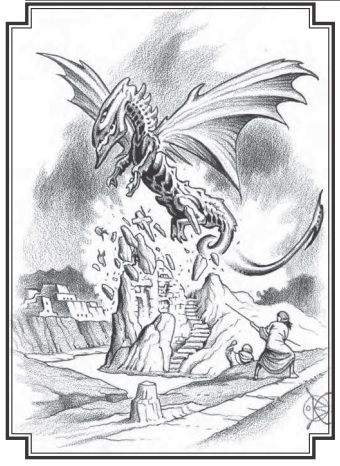
Where are the other two heads?
Canaanites don't have any god monsters, though, so it's straight into Egyptian.
First up, I have a correction to make. I said earlier that there aren't any stats for hippos, but I was wrong. Hippopotamus are filed under Egypt, and they're CR 4 and very simple creatures. They do have Spot and Listen at +6, so do be aware of that when tuning your hippo-hiding amulets. These guys are not as scary as you might expect, because while they have a nasty attack bonus, their damage is only 1d6+8 and... that's it. If you have someone to cast Cure Light Wounds every turn, it has only 60 HP of its own and no other anything. This is a rather weak CR 4.
Let's check out a more imposing CR 3 foe: Apep-Spawn . These huge snakes can confuse people as a free action, have fast healing 3 at night or in darkness and constitution-damage poison. See, that's something nasty for a group to deal with.
Then there's the Accursed Ka-Spirit template. These undead are only +2 CR, and any humanoid can be so struck. They can cast imprisonment as a level 17 sorcerer. If you're forgetting your 3.x era D&D, Imprisonment is one of the nastier save-or-lose spells, since... well, it doesn't even kill you. If this strikes you, you're instantly locked in suspended animation until a different level 9 spell is used to free you. That is a reasonable thing to throw at a level 2-3 party. Wait, cast as a level 17 sorcerer? Sorcerers don't get to cast level 9 spells until level 18! They also have earthquake, stone shape and more in their casting list and a tendency to be found underground. This is absurd.
That's actually it for the bestiary, though. Next time we get into the setting information! This is actually almost a hundred pages of reference material, statistics for your favorite Old Testament characters and advice for playing in the Testament setting! Are you ready to find out what Samson's strength score was?